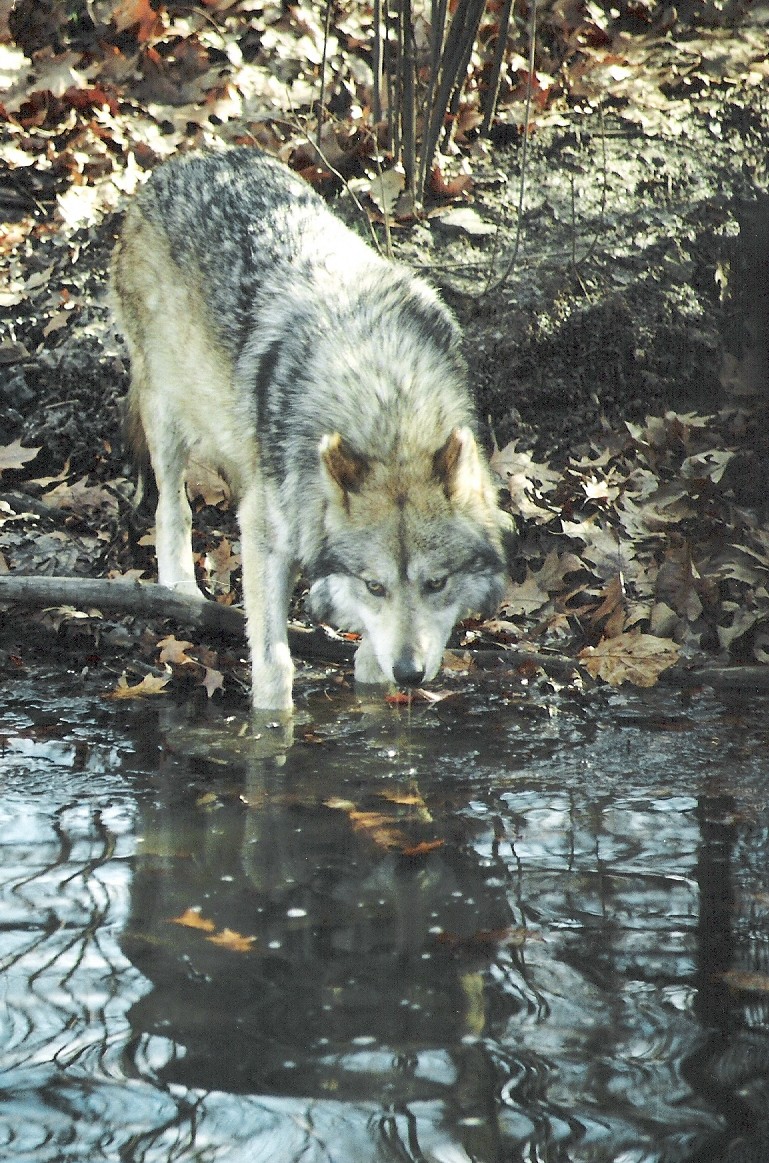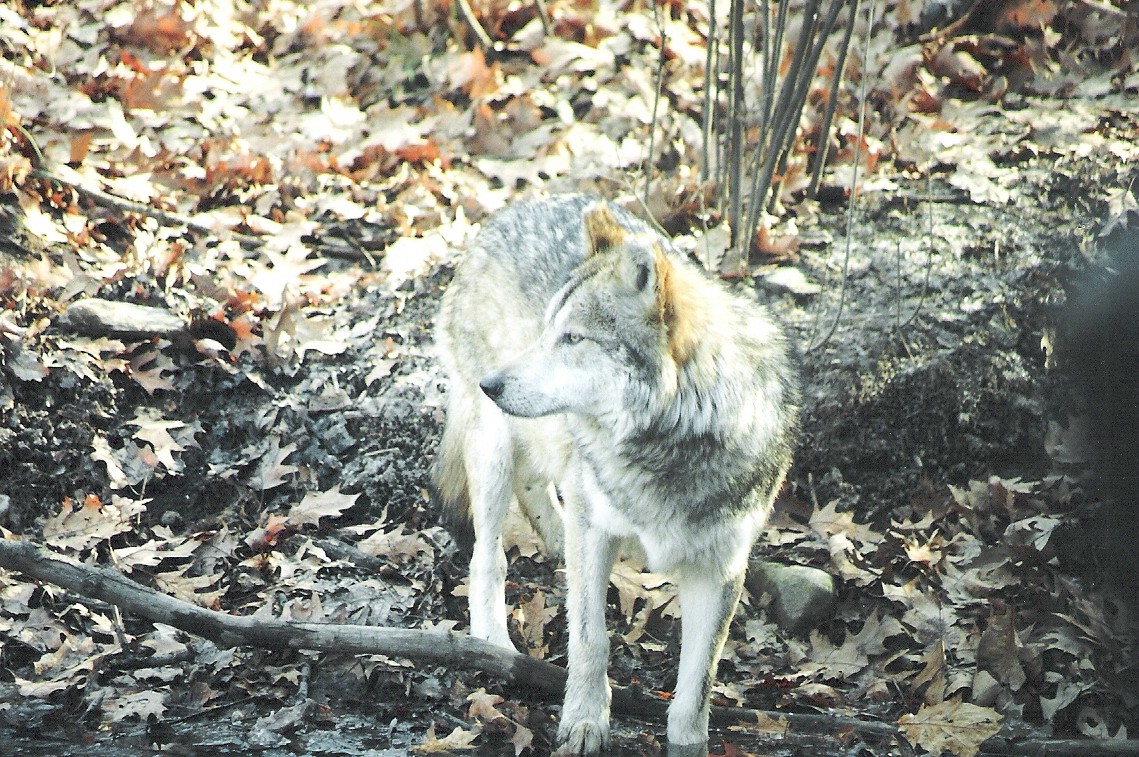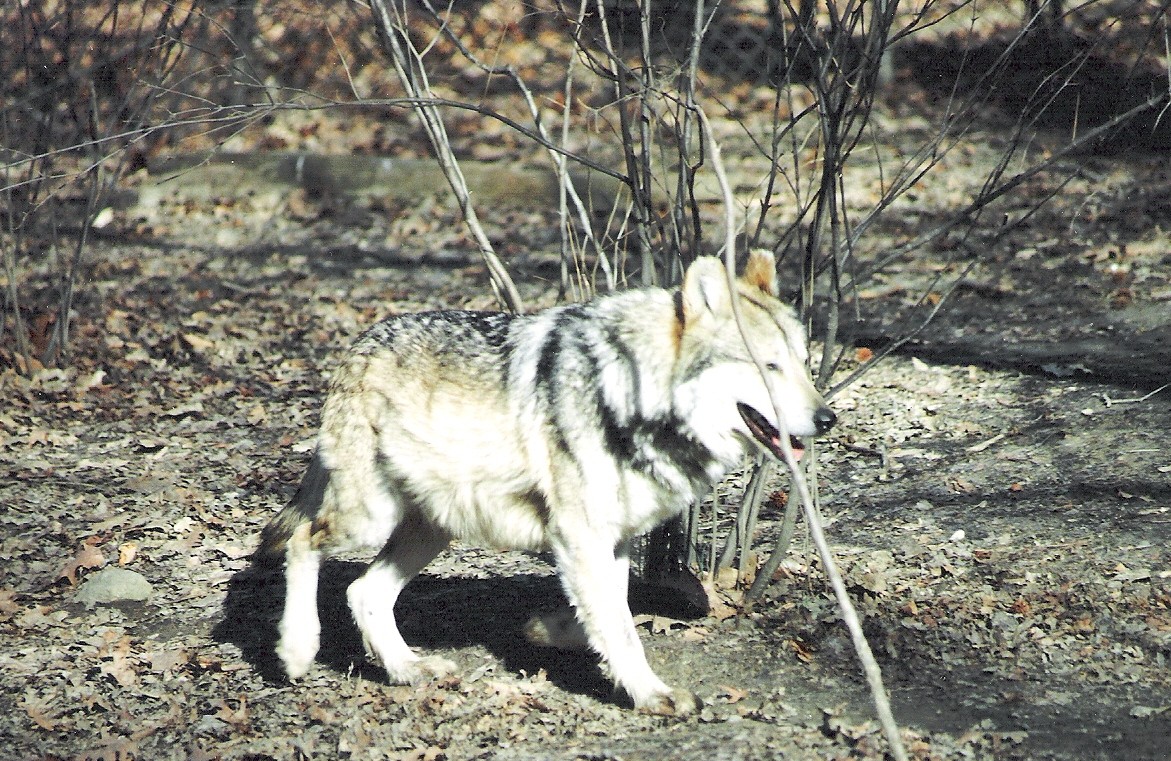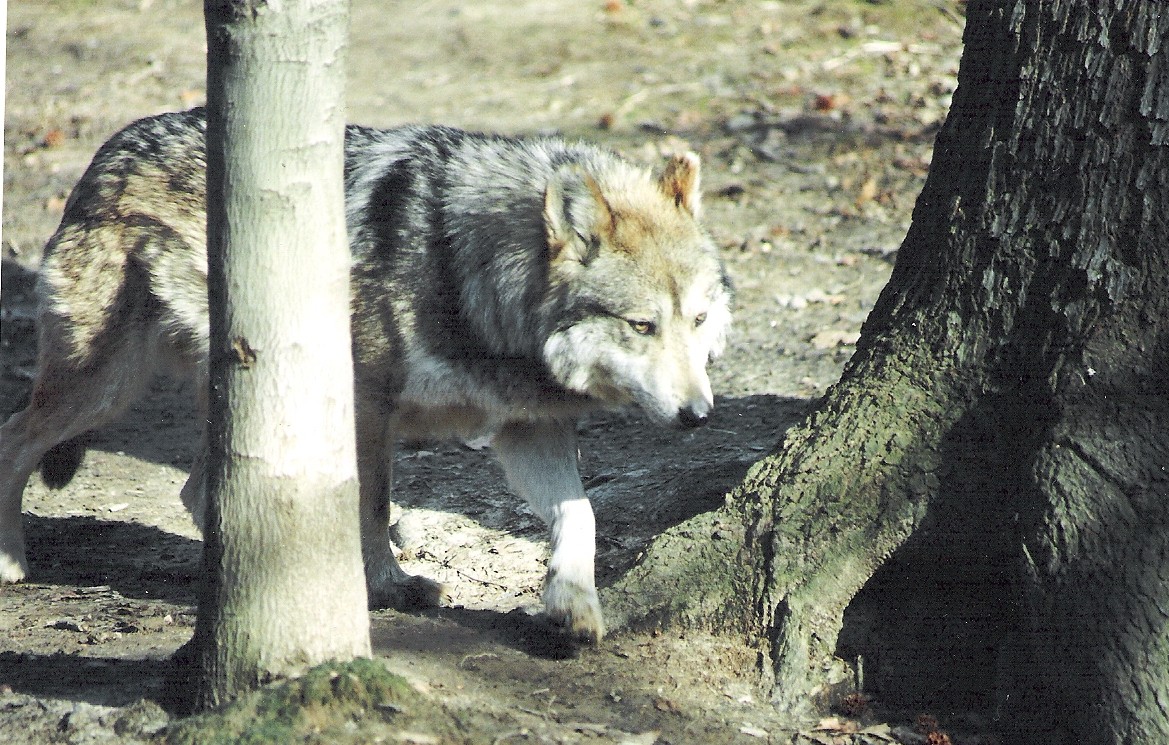



World Carnivore Society
Wild Dog Foundation
P.O. Box 1603
Mineola, NY 11501-0901
USA
E-mail address:
savewilddogs@yahoo.com
PRESERVING OUR WORLD'S WILD CANINES
The Wild Dog Foundation
We give FREE TALKS on Coyotes, Fox and Wild Dogs throughout New York, New Jersey and Connecticut, and free SKYPE to locations further away
THOUGHT YOU'VE SEEN A COYOTE ON LONG ISLAND?
In conjunction with researchers and interested groups, The Wild Dog Foundation (for many years preparing Long Islanders for possible coyote colonization) is helping in documenting the possible presence of this wolf-like canid as it expands its range. The public can help in this effort. Contact The Wild Dog Foundation at savewilddogs@yahoo.com and we will identify any photos, tracks, scat and behavioral evidence of this possible event....
THE RED FOX, Vulpes vulpes
The Red Fox is the most common wild canid in the world, found throughout The Northern Hemisphere but introduced to Australia. With a varied omnivore diet (both animal and vegetation), they keep a balance by preying on abundant rodent populations. In fact, in North America, they may limit the spread of Lyme Disease and other rodent borne disease. They are essential to any ecosystem.
COYOTES ON LONG ISLAND, NEW YORK
The first recorded breeding female Coyote on Long Island (Queens), New York in summer 2016. She had 8 pups and two other adults (her mate and a helper) in the family group. The adults were great providers for their dependent pups and they grew healthy and robust. However the hyper urban environment they lived in and their unfortunate high visibility would prove challenging
Despite the Wild Dog Foundations best attempts to educate locally and prevent conflicts, Authorities decided to kill them due to inaccurate perceptions and habitual feeding by the public and Authorities refusal to listen to the Wild Dog Foundation, who monitored them nearly every night since the birth of the pups, at the end of 2016 and early 2017.
The animals may have been habituated but displayed NO AGGRESSION or threats to the public. A more humane management plan could have been implemented with the deterring The Wild Dog Foundation was doing, and the elimination of habitual feeding by the public as the pups grew they possibly would have dispersed naturally.
While a major setback for coyote dispersal to Long Island, the last land mass of devoid of a coyote population, and a personal tragedy for the Wild Dog Foundation, coyote dispersal is still a strong possibility and ongoing. Recent reports of other individuals continue to surface as the Wild Dog Foundation closely monitors and educates on how to coexist and prevent conflicts . Allowing a smooth transition for coyotes in acclimating to new habitats .
Here tracks of a pair of coyotes recently in western portion of Long Island along the New York City border
The adaptability of coyotes in securing new habitat is well documented , and Long Island (and the Borough of Queens , New York) is no exception, as diverse food , both natural and human refuse are being utilized by dispersing coyotes in order to survive . As the Wild Dog Foundation closely watches and educates on this historical event , it also is fortunate to uncover and resolve many misunderstood perceptions in order to portray the most accurate picture of these animals as to get the public to better understand them and negate anxiety and inaccuracy.
Here further evidence of coyote presence through their scat shows a natural diet, as small animal bones, possibly squirrels and mice, as well as Possum fur and seeds. As with other areas within the urban environment , abundant cat food placed outside as well as scavenging refuse on urban streets and the large Canada Goose population make up much of the rest
.
African Wild Dogs
Wild Dog. What does that mean? Well, for some, Wild Dog is often used negatively. Wild Dog is not someone's pet gone wild but a legitimate term used to describe two of the most endangered carnivores in the world. The Wild Dog Foundation was formed with the intention of bringing notice to two greatly neglected carnivores. This will be done by education and with the hopes of raising funds for research projects. The Wild Dog of Africa (Lycaon Pictus) and the Dhole (Cuon Alpinus) of Asia are two forgotten carnivores in the popular world of conservation. They are often ignored along with other misunderstood Wild Dogs of the world.
The African Wild Dog is one of the most endangered carnivores in the world. They are also the most social member of the dog family. The African Wild Dog is one of the few mammals who takes care of its old, sick and disabled. They have colorful calico coats of black, yellow and white. Their numbers have severely declined due to disease, loss of habitat and human persecution.
IT IS IRONIC THAT THE MOST SOCIAL OF ALL MAMMALS ARE ALSO AMONG THE MOST ENDANGERED
 |
Lycaon pictus (Latin for "painted wolf") is an apt name for the African wild dog. Their body is similar to that of a wolf but the ears are larger and more rounded: they help keep them cool and allow them to hear very well.. Each dog's marking is unique - splotches of black, pale yellow-brown, blonde and white. The muzzle is black and the tip of the tail is always white. The fur is short but shaggy and is a little longer at the end of the tail and around the throat. There is a dark stripe of fur on the forehead. Dogs vary in size from 35 lbs to 70 lbs and stand about 24 inches at the shoulder. They have four digits on each foot and are extremely lean, muscular animals with long slender legs. Once common in all areas of Africa, except rain forest and deserts, African wild dogs are extinct or nearly extinct in nearly 32 countries of their former range, and the remaining populations are too small to remain viable. Of the six countries where they still exist, only three (Botswana, Tanzania and South Africa) have populations of more than 300 dogs.
|
Wild Dog / Human conflicts are very rare and only happen through 3 things:
1.- Food habituation by direct or indirect feeding.
2.- Disease and illness, rabies.
3.- Livestock predation, poor husbandry and lack of protective measures.
Conflict can be resolved with common sense.
Thought at one time to be animals of the savanna, they exist in, and in some cases prefer, wooded areas and bush country. They have adapted to semi-arid deserts and even to the swampy floof plains of the Okavango Delta. A pack of wild dogs was once seen near the top of snowy Mount Kilimanjaro.
With no permanent base, except when the pups are very young, these nomads roam over a home range of 500-1,000 square miles,traveling up to 30 miles a day. Wild dogs are the most social of all canines. They lick the mouth of an alpha animal, displaying the juvenile behavior that caused adults to regurgitate food. Submission is indicated by exposing their bellies and throats to a dominant dog. |
 |
Bonds between pack members are continually reinforced at 'greeting ceremonies'. Before a hunt, African wild dogs greet each other with leaps,grunts,squeals,tail wagging and morning and late afternoon. When angry or defensive, they produce a deep-throated low growl. Unfortunately, these greetings place the dogs in danger: any illness in the pack quickly spreads to all members. They are especially vulnerable to diseases carried by domestic dog (e.g., distemper and rabies). Wild dogs are unlike other large carnivores in that they rarely fight among themselves, either for food or dominance. They will care for old, sick or injured pack members, regurditating food or licking wounds clean. |
Pack size varies from 2 to 60 members. It comprises an alpha male and female, their pups from previous years and occasionally their own siblings. Normally, only the alpha pair breed, but when food is plentiful, other females may give birth, too. After a gestation period of approximately 72 days, a female gives birth to a letter of 6 to 14 pups, generally between April and June. They use the abandoned burrows of warthogs or hyenas as a den. Pups are the center of attention for the next few months. All of the pack members take part in their care and feeding until they are old enought to hunt. One or two adults stay at the den to protect the pups while the others hunt. |
 |
The pack hunts cooperatively. African wild dogs can run almost 40 miles per hour. Their diet includes gazelle, antelope, zebra and warthog. They are extremely efficient hunters and contrary to popular belief, prey is dispatched in seconds rather than minutes. Wild dogs are only carnivorous species to allow their young to feed first. The adults wait until the pups are finished before they will feed. There are fewer than 4,000 African wild dogs left in the wild, perhaps only 2,500. Human hatred and persecution have had the most serious effect. They are shot and poisoned by farmers and ranchers. Road kills and snares take a heavy toll on packs that leave protected areas. Rabies, introduced by domestic dogs, has caused the extinction of at least one population. Lions kill wild dogs and hyenas steal their food. |
The Organizations Goals:
|
Dhole
The Dhole is a pack hunter from Asia. Their color is a reddish brown with long tails tipped in black. They weigh between 27-45 pounds. There has been much prejudice against the Dhole and they have been poisoned, shot and trapped. There may be up to 25 members in a pack. Dholes have a wide range, from the Indian jungles to the Siberian forests. Dholes hunt deer, wild boar, and buffalo. Dholes are now facing extinction.
CURRENT GLOBAL DHOLE POPULATION AT 3000!!!!.
DHOLE - Picture by Dr.Leon Durbin - Dhole Conservation Project
Ethiopian Wolf
The Grey Wolf once had the largest range of any mammal except for humans. They are the largest of the Wild Dogs and their range has been greatly reduced. Wolves are being reintroduced to National Parks and their numbers are rebounding, thanks to protection. Ethiopian Wolves number fewer than 500. They are a reddish color and live in packs. Unlike Grey Wolves, Ethiopian Wolves hunt mainly rodents. They are in danger of extinction.
CURRENT GLOBAL ETHIOPIAN WOLF POPULATION ONLY 500!!!.
Bush Dog
Bush Dogs resemble otters more then dogs. They are small, pack living, canines who hunt small deer and large rodents. They live in grasslands and rain forests.
Maned Wolf Maned Wolves are not true wolves but a beautifully unique canine found on the South American grasslands. Their long legs help them to hunt for prey in tall grass. They are bright red in color with black on their legs and a white chest. They hunt birds, reptiles, rodents, and occasionally deer. They live in pairs. |
 |

MANED WOLF - Picture by Robert Berghaier
THE EASTERN COYOTE - (Canis latrans var.)
 |
Coyotes are one of the most successful Wild Dogs in the world. Despite horrible persecution, coyotes have expanded their range. Still, today coyotes are being relentlessly slaughtered by human hatred. Coyotes have an important role to play in nature. There has been many myths and misunderstandings about the large wild canid that has settled here in Northeastern Noth America within the last 100-150 years with the demise of the wolf. Many of these myths have been perpetuated by those who hate this animal and do not think it has the right to exist in the environment. However, there are a growing number of interested parties in the ecology and behavior and what role this animal is playing presently. In the beginning it was thought that this was a new species in the East. That it was a mixture of dog and the supposed new coyote immigrant who had traveled from the west. However studies show that unless manipulated by humans, dogs, coyotes and wolves cannot adjust their breeding cycles in order to time their mating seasons to coincide with each other as dogs are random breeders and coyotes and wolves only breed once a year. So, even though dogs and coyotes can interbreed, in the wild the likely hood of this happening is very small, but evidence does show that it happens on occasion. So the term coydog in New England is not entirely accurate or inaccurate. Another explanation is that this new animal evolved larger and very wolf -like in order to capture large prey like deer. While evidence is inconclusive and coyotes in other parts of the United States can and do prey on deer, it is unlikely that large size to kill deer is the reason for this wild canines uniqueness. Though the larger size and broader jaw structure does aid in anchoring deer. . |
The other answer is that coyotes and wolves have bred together. Recent genetic evidence also shows this to be the case. Even further some claim that the wolf of the East may have really been the Algonquin wolf or Eastern wolf which is very closely related to the coyote, overlaps in size with some individuals and recently split from eachother in evolutionary terms. The Algonquin wolf does also interbreed with the larger gray wolf as all three species (the Red Wolf may in fact be a southern version of the Algonquin wolf) are part of the same genus |
 |
Unfortunately Eastern coyotes, like their western subspecies are heavily exploited succumbing and adapting to tremendous pressure from humans due to increasing human population and unlimited hunting pressures. Many Eastern coyotes are killed every year by shootings, trapping , poison and car collisions . |
COYOTES OF THE BRONX
WOLVES FOR THE NORTHEAST
 |
There is no reason the Northeastern United States. cannot have the wolf in its forested ecosystems. The recent genetic evidence confirms that Eastern Coyotes in their Northern range are wolf\coyote\dog hybrids and some claim the possible historic wolf of pre colonial times was in fact the Red wolf from the southeastern United States or even the Algonquin wolf of southeastern Canada with the larger grey wolf in the Northern fringes. Regardless, the basic arguement is we need to restore predators . The Scale of the Eastern forest and the diversity in prey species proves that there can be different predators for differing roles. Like some ecosystems in Africa and Asia , different sized predators kill different sized prey. While wolves in general are not specialists and will take any size prey, the large moose populations in Maine , New Hampshire and Vermont could support the larger bodied wolves. While the Algonquin wolf and coyote/wolf hybrid will prey on white-tail deer and beaver and a variety of smaller prey, we see there is coexistence between them in southern Ontario.. Truth is , all these wolf (the coyote included as it is a wolf ) species are opportunists and will hunt a variety of prey. Also, Algonquin wolves sometimes form mixed packs with coyotes and hybrids as has been seen in Southern Ontario , and may be happening in the Adirondacks . The last decade several wolves whether captive or wild have been killed in the Northeast, Why? Because of liberal killing of coyotes. Wolves will not recover on their own if people keep shooting coyotes. People need to realize that wolf recovery in the East is dependent on better attitudes towards coyotes. It is our moral obligation, not just on ecological grounds, to restore large predators. It is also not fair to advocate for certain predators that are publicly more favorable than others when all predators are important. We could have three species of wolflike canids competing for resources and we would not be overwhelmed by predators as some feel. Coyotes, contrary to some, are not out of balance nor are they over abundant .All predators are dependent on their prey and habitat, both wolves and coyotes. And currently the Northeast has never been better for large carnivores since the pre-Columbian era. The Northeast does has room for a larger predator in the grey wolf, and Eastern wolves and their hybrids The Eastern coyote is also a valuable predator in the ecosystem and plays an important role. It is time to advocate for all carnivores to return to the eastern forests.
|



WILD DOG FOUNDATION ON YOU TUBE http://www.youtube.com/watch?v=UxZaLXMdzSg/
HAVE WOLF-LIKE CANIDS RETURNED TO LONG ISLAND, NEW YORK?
It has been nearly 400 yrs since wolf-like howls resignated on Long Island , an almost 100 mile stretch of land off the east coast and part of NY. In the early colonial period , British and Dutch settlers placed bounties, which in some old town records are still in print, and being seperate from the mainland, the animals were quickly eradicated. The last 100 yrs has seen a new wolf-like canid colonize the east in the wake of the original wolf's absence, the Eastern coyote or coywolf. An animal that the last remaining wolves hybridized with to a varying degree . This coywolf has done well in human altered landscapes and has even adapted to the major metropolisis having been officially documented in the NYC area as early as 1995. Coyotes are successfully breeding in the Borough of the Bronx , coming out in the wee hours of the morning and hunting rats and other rodents in alley ways and up people's driveways and returning to city parks as the sun comes up (Wild Dog Foundation).
Occasionally young animals disperse into Manhattan, but are either removed or do not survive. The only land mass devoid of coywolves is Long Island (including Queens and Brooklyn) which has ample habitat and potential food sources such as geese , rats ( the Wild Dog Foundation's personal observation) , and abundant deer populations further on the east end. Being an island , this land mass poses some challenges for dispersing animals , though not an impossibility. Coyotes are good swimmers and could certainly swim the narrowest distance between the Bronx and Queens, or even island hop, from one to the next or brazen enough to traverse the bridges from the Bronx to Queens . Regardless , reliable photos of coyotes in the Borough of Queens and the fact that they have been documented on Fisher's Island (an island that is part of the Town of Southold) show that indeed they have made it to Long Island, and wolf-like animals again roam it's shores. It was my desire to reach out to the people of Fisher's Island after reading about their concern that coyotes were observed there and the belief that cats were apparently dissappearing.
I noticed on the ferry ride several islands dotting the sound in between Connecticut and Fisher's Island
Coyotes may be "island hopping" to get there, or as some residents explained swimming the narrowest distance with Connecticut on the eastern end of the island. But the sanctity that random islands provide after a prolonged swim seems more accurate.
It is normal for young animals to disperse to find new territory to raise young and live out their lives.
In regards to loss of a feral cat colony and possible disappearance of pets, coyotes can't be all to blame. Great horned owls prey on cats and residents have observed the birds more frequently.
People unfortunately can poison cats ,as they are blamed for the predation of song birds .
Island populations are aslo vulnerable to disease such as feline luekemia, and AIDs that may have run through the population as summer residents bring pets seasonally and tragically leave them to perrish on their own, sometimes they're sick and spread disease.
Residents have said they saw pups as recent as september, so they have bred, and the concern for them over running the island (only 7 miles long and 1 mile wide) is unfounded as the island , due to residents observations, seem to be this sole packs territory , of which they patrol, but keep to the more private areas.
Unfortunately an individual coyote may be observed several times by different people, the public inaccurately believing there to be many more individuals then there truely are.
Since some years they have not been seen , they may return to Connecticut, the young may disperse off the island as food sourves become limited , or stay with their parents offsetting further breeding, but future generations may leave anyway.
It was advised that the public familiarize themselves with the individuals and appreciate them keeping other coyotes off the island, and that removing them would just create a vacume .
Benefitting LI's ecology, by eating geese , rats and possibly lowering the risk of Lyme Disease by feeding on the White-footed mouse, coyotes may benefit Pipping Plovers by reducing competitors that may prey on nests (cats, rats and raccoons) , though loose domestic dogs are sometimes the culprits and human vandalism.
We cannot say for sure if they have been breeding consistantly or if any subsequent generations will survive, but populations will always be low due to the difficulties of getting there. The whole reason I do these talks is not only because I have a passion for coyotes, but there" the fact that coyotes can live in close proximity to us and that has some people unnerved"
Sightings of coyotes in urban areas have inspired me to take a proactive approach to educate people about coexisting with the animals. " Sharing a community with coyotes is not a bad thing as the animals have been living in urban areas for decades without much conflict".
Firstly, coyotes should never be fed by humans. Normally coyotes keep to themselves, shying away from humans.
Once they become used to handouts, they are as good as dead."Coyotes are wild animals. Like any other animal, they are best kept wild."
Given that coyotes and dogs are similar creatures, coyotes become nervous in the presence of the domestic animals and may become territorial, especially if there are pups. If you come in contact while walking a pet, asserting dominance is an important factor when facing the coyote.
Yell at them, stomp your foot at them, maybe even throw and object towards them.
Don't hit them, but certainly throw something towards them.
Showing dominance and aggression (not lethal) through loud noises and running at them will instill fear in the coyote and teach it to stay away.
Studies show that coyotes are more likely to subsist in local parks, cemeteries and golf courses. At night, they are known to hunt the city streets for rodents.
My only concern is to show they can exist in close proximity to humans and with minimum impact and minimum conflict as long as simple common sense things are done.
All Drawings are original works by Steven Nash and are exclusive property of the Wild Dog Foundation.
All Pictures are exclusive property of the Wild Dog Foundation.
COPYRIGHT © 1996 WILD DOG FOUNDATION
Please write us for any questions at:
The World Carnivore Society -The Wild Dog Foundation
P.O. Box 1603, Mineola, NY 11501-0901, USAE-mail address:
savewilddogs@yahoo.comFounded 1996